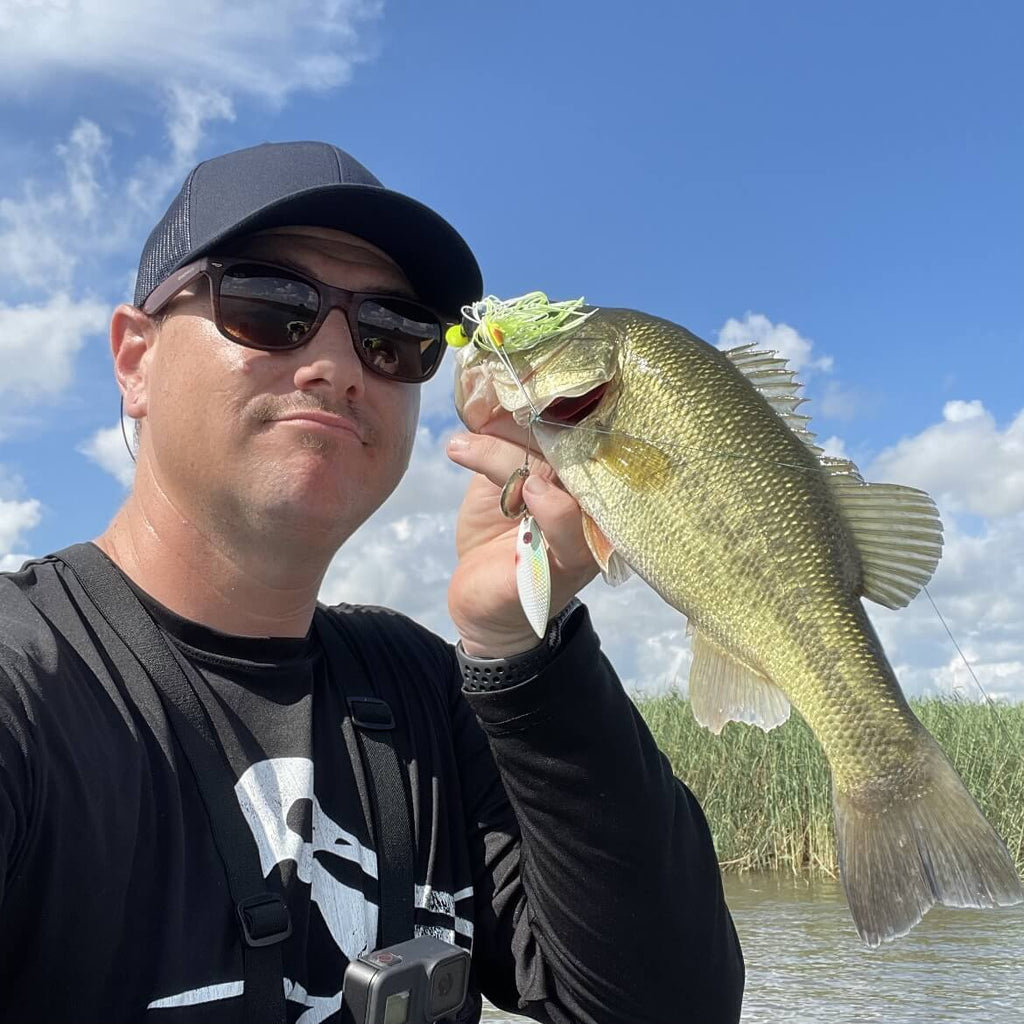MONSTERBASS ambassador Vinnie Verden (aka Pelican Bone) is a Louisiana native and spends most of his time fishing brackish water for bass. For those that don’t know, brackish water refers to water that consists of a mix of both fresh and saltwater. This mixing happens along the coast as fresh water makes its way into the ocean. And bass can actually survive and even thrive in these environments.

“They can survive in pretty decent salinity,” said Verden. “I’ve caught speckled trout in the same place as bass sometimes. But when you go up in the backend of the dead end bayous further north, you get to where it’s more just bass.”
Other than the salt content, one of the other typical characteristics of brackish water is that it’s rarely clear. Between the incoming and outgoing tides as well as muddy water running down the rivers from rains upstream, there’s almost always some color to the water that Verden frequents.

“That’s why I like to go with spinnerbaits, because of that little bit of extra vibration and extra flash. Chartreuse is a fantastic color around here. When I pick spinnerbaits and most baits, I like a white and chartreuse mix.”
As the fresh and saltwater mix, so do many of the lifeforms that live in each. This creates a wide range of prey for bass, and a spinnerbait does a good job of not only catching a fish’s eye, but almost mimicking a lot of these different baitfish.
“We’ll have shad and mullet mixed in. You’ll have crawfish they’re eating on and then you’ll have little crabs swimming by too. You have twice as much variety of food. Those little finger mullet school up sometimes as much as the shad do.”
Verden will use a few different spinnerbait combinations, mixing up the colors and the blade combos. But it’s almost always some variant of white and chartreuse and the willow leaf blade is his preference, most of the time.
“Willow leaf is my go to. I’ll only go to the Colorado blade whenever the water is real muddy. When the visibility is down to a couple inches. Cause it gets that bad sometimes.”
As for the cover Verden fishes a spinnerbait around in brackish water, that’s a pretty wide range as well.
“If I’m in the bayous or canals, I’m dealing with a lot of trees. Some cypress trees, some oak trees, some willow trees. And you got laydowns for cover. And you also got a lot of grass. And we deal a lot with hyacinth. It gets clogged pretty tight and that makes some good cover too in the summertime.”

Verden will target bass around whatever cover is in the water, fishing the trees more like isolated targets and then paralleling the hyacinth lines. In the summer, the fish really key in on shade and cover, so these hyacinth lines are particularly effective.
But that plays right into the wheelhouse of a spinnerbait.
“We don’t have any deep water around here. It’s all bayous and canals. So a spinnerbait can hit all areas of the water column. Sometimes you can find 12-foot. But most of the time you’re fishing anywhere from 1- to 5- foot deep.”
Though there’s a chance for Verden to intercept a few salt water species like redfish and speckled trout, he keeps his gear fairly light. His combo of choice consists of a 7-foot medium heavy casting rod paired with 6.5 gear ratio reel spooled with 30- pound test braided line.
One of the key differences to fishing brackish water for bass has to do with the tide. Verden says the bass will bite on both a low and high tide, but the incoming and outgoing tides really help him pinpoint the bass on certain days, creating pickoff points anywhere there’s a narrow mouth or opening.
“With that tide coming in and out you can find little choke points and that will be an ambush point for them.”

Using a spinnerbait to create an easy to find meal for bass living in brackish water is a great way to get bit. If you’re wanting to try this technique out yourself, Verden stresses the importance of the bright chartreuses and whites. Those colors will standout better in the often off-colored water and will be key to helping you put fish in the boat.
← Older Post Newer Post →


